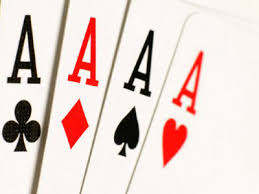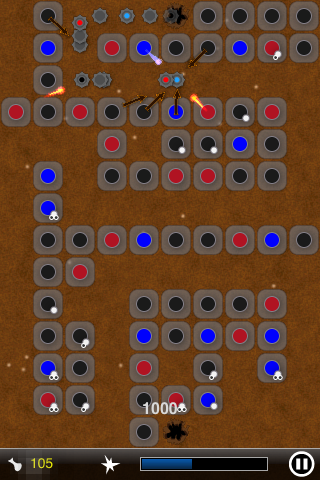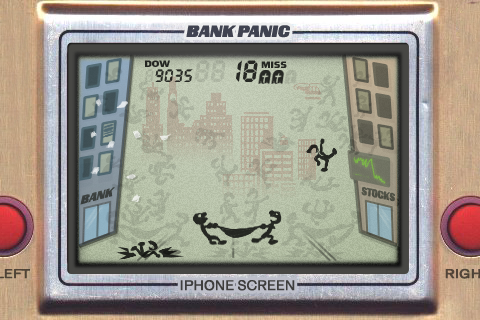The Non-Violent Path: Mirror's Edge
 I finally finished Mirror’s Edge over the weekend and loved it, for a number of reasons. The fiction is mostly forgettable, but the title really shines in the gameplay and visual design departments (read an interesting interpretation of the visual aesthetics at eatsleepgame.net). I’m not a reviewer, so I won’t try to convince you to buy the game. If you’re interested in a unique experience, though, do consider it.
I finally finished Mirror’s Edge over the weekend and loved it, for a number of reasons. The fiction is mostly forgettable, but the title really shines in the gameplay and visual design departments (read an interesting interpretation of the visual aesthetics at eatsleepgame.net). I’m not a reviewer, so I won’t try to convince you to buy the game. If you’re interested in a unique experience, though, do consider it.
During and after this playthrough, one element is prominent in my mind: the combat. The game uses both melee combat systems and first-person shooter gameplay. The combat is not the best part of the game, and it even leaves the gamer wondering whether it should have been included. I think that the designers made the right decision, despite the technical shortcomings of the system.
In games like this, where combat is an integral and yet avoidable part of the experience, there is a burden laid on the player. Another game that comes to mind from the recent past is Metal Gear Solid 4. In both Mirror’s Edge and MGS4, the player is offered incentives to complete the game without use of the combat system. In Mirror’s Edge, the incentive comes primarily in the form of achievements or trophies, whereas in MGS4 it comes in the form of unlockable in-game content. If the player decides to forgo these rewards and engage in combat anyway, the implication is that he or she is not getting the full range of the experience on offer. The problem is that playing through either of these games without harming anyone is seriously HARD.
 Both of these titles offer a non-violent, or at least non-lethal, path to the end of the game. To me, the question then becomes: in what ways is the game actively directing the player’s decision making? In MGS4, it is possible to play the length of the campaign without an enemy character ever even realizing that the player character is in the environment through the use of stealth techniques and camouflage. Mirror’s Edge, however, puts the player character into situations where direct confrontation is inevitable and only barely escapable without engaging in combat. It seems that the designers of Mirror’s Edge regard combat as an inevitability, and if the player is able to escape without participating, then he or she is considered to have gone over and above the requirements of the game. Perhaps the player (like myself) that chooses to shoot it out with the Orwellian police force from time to time is hurting their experience by not using the environment to circumnavigate enemies, an interpretation that the game seems to foster through overwhelming enemy encounters.
Both of these titles offer a non-violent, or at least non-lethal, path to the end of the game. To me, the question then becomes: in what ways is the game actively directing the player’s decision making? In MGS4, it is possible to play the length of the campaign without an enemy character ever even realizing that the player character is in the environment through the use of stealth techniques and camouflage. Mirror’s Edge, however, puts the player character into situations where direct confrontation is inevitable and only barely escapable without engaging in combat. It seems that the designers of Mirror’s Edge regard combat as an inevitability, and if the player is able to escape without participating, then he or she is considered to have gone over and above the requirements of the game. Perhaps the player (like myself) that chooses to shoot it out with the Orwellian police force from time to time is hurting their experience by not using the environment to circumnavigate enemies, an interpretation that the game seems to foster through overwhelming enemy encounters.
In MGS4 and Mirror’s Edge, the player characters (Snake and Faith, respectively) take on the characteristics of the player behind the controller. Whether that player chooses to engage in combat or not is a decision that must be made based on environment and circumstance. It is difficult to ignore the feeling that any moral ground these characters may at first have quickly falls away during combat as the divide between player and non-player characters grows smaller. When the player chooses to engage in combat, a parallel is instantly drawn between friendly and enemy characters, forcing the player to examine his or her actions more closely. In either of these titles, I think it is arguable that a violent playthrough is tantamount to failure. Of course, the designers must make it a viable option for commercial purposes, but that does little to mitigate the feeling of resignation produced by picking up an unwieldy, inaccurate weapon to more easily traverse an enemy-cluttered environment in Mirror’s Edge.
 If Faith has to resort to gunplay the weapon hinders her movements, eliminating her skills as a “Runner.” The reason she is interesting to the player — her gymnastic ability — disappears. Melee combat is effective but tricky, and is usually implied to be non-lethal (I think). Faith is interesting until the player decides to fight under terms other than her own, and then she becomes dismissible. Her shooting skills are sub-par, and any player looking for a shooter should look elsewhere. Faith is good at what she does, but I’m afraid many people will only notice where she falls short.
If Faith has to resort to gunplay the weapon hinders her movements, eliminating her skills as a “Runner.” The reason she is interesting to the player — her gymnastic ability — disappears. Melee combat is effective but tricky, and is usually implied to be non-lethal (I think). Faith is interesting until the player decides to fight under terms other than her own, and then she becomes dismissible. Her shooting skills are sub-par, and any player looking for a shooter should look elsewhere. Faith is good at what she does, but I’m afraid many people will only notice where she falls short.











